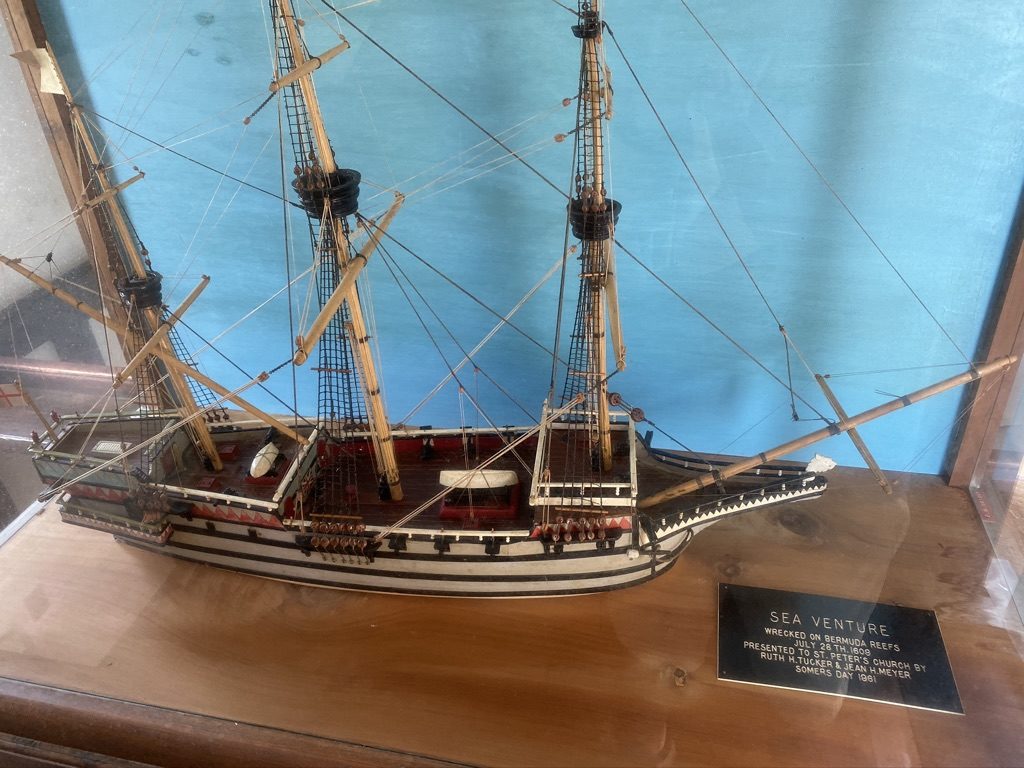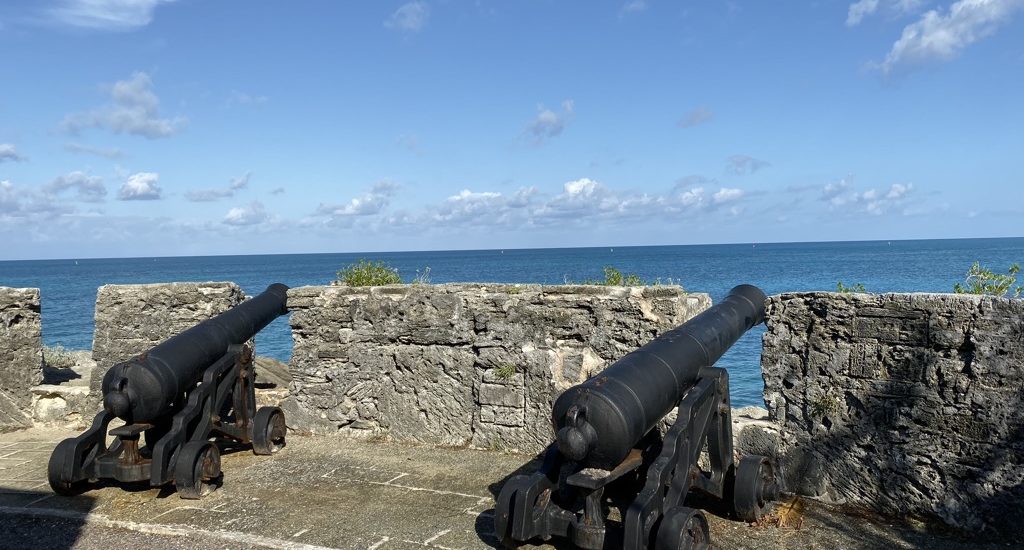Bermuda is a small island that appears to be lost on a map in the middle of the Atlantic Ocean. And it almost was. In 1505, a Spanish explorer, Juan de Bermudez, captain of the Spanish vessel La Garza, is reported to have seen the island on a journey between Cadiz, Spain and Mexico. He didn’t stop for a look, but merely logged it in his navigational journal. In decades that followed, other ships made attempts to land, but never did. In 1543, a French map of the world was published and showed the island “La Bermuda.” It was named after that Spanish explorer who simply logged the uninhabited island on the map. This is testimony that it’s good to document your findings! You may just have a beautiful island nation named after you years after your death. And this one is apparently a volcanic sea mountain that formed from the mid-Atlantic ridge about 100 million years ago (give or take).
The Spanish, Portuguese, and English remained on top of their exploration game in the Americas for many decades following the venture of Juan de Bermudez. In 1607, the Virginia Company of London financed a journey for settlers to explore the area now known as North America. They landed in a place they called Jamestown (after their King James I), where the first British colony in today’s United States was formed. In 1609, the Virginia Company launched the maiden voyage of a new ship named Sea Venture which led a fleet of ships that left from Plymouth, England on June 2 bound for Jamestown, Virginia. On July 28, a hurricane sank one ship and threw Sea Venture so far off course that it shipwrecked on a reef in Bermuda. All 150 of the people on board were saved and took refuge in Bermuda.
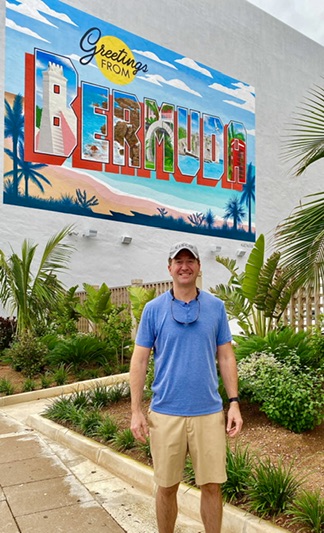
The colonists rebuilt two boats, Deliverance and Patience. Some of those shipwrecked colonists were later transported to the Virginia colony of Jamestown on these new vessels. However, the Admiral of the flotilla, Sir George Somers, stayed in Bermuda, as did many other colonists. After all, this place was a pretty nice. It does not have the cold winters of Virginia. It’s more of a tropical paradise with a very temperate climate. And the beautiful blue green water is something really special.
Today, you can visit a replica of the ship, Deliverance as I did during my visit in November 2019. You can also visit the site of many shipwrecks, mostly through scuba diving. Bermuda has claimed a lot of ships in its time. It’s mostly due to the coral reefs that destroy the hulls. And, until very recently, many sailors had no idea where and when hurricanes were until they were too close to the storm to find out.
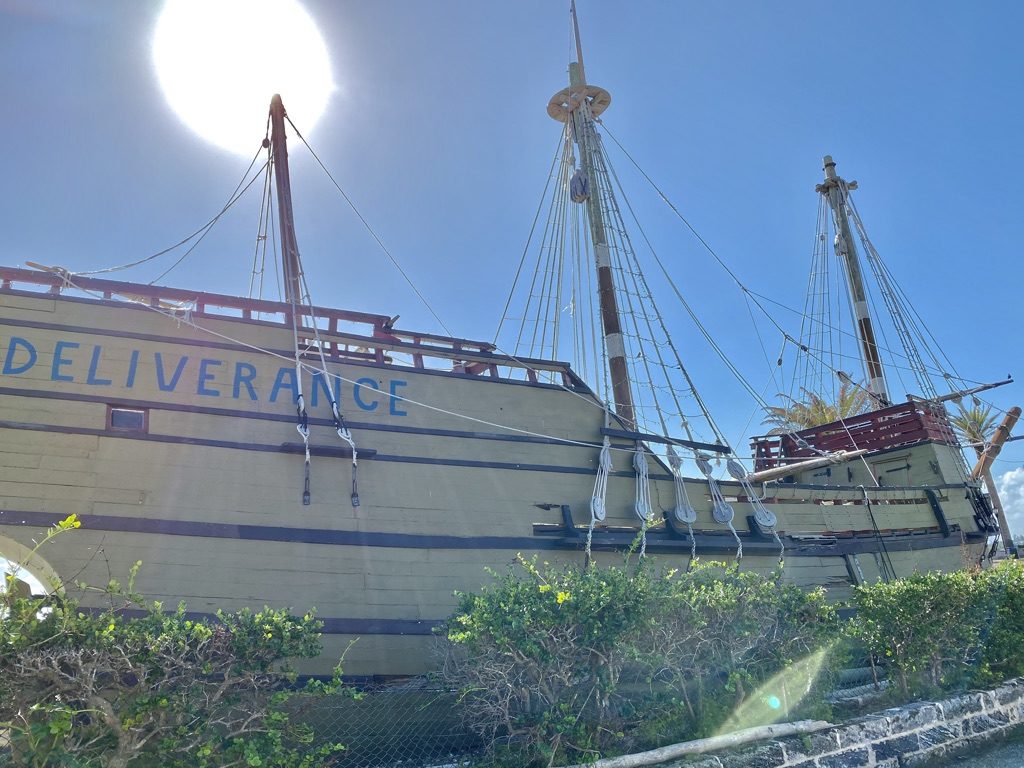
I did not shipwreck on Bermuda, but came here in November 2019 to attend the Bermuda Entrepreneurship Summit, of which I wrote about in another post. While I was only here for a few days, I could not leave without taking in some of the amazing history. Upon my arrival on the island, I went for a slow-paced 4-mile “sightseeing jog.” I sometimes do this in places I visit, especially when there is a high density of interesting sights to see; it allows me to get in some fitness while also exploring a new place. This island is small, about 21 miles long and only 1.75 miles wide. For the summit, we were staying in the area called Hamilton, which is the capital city of Bermuda.
I ran from the Hamilton Princess hotel down Front Street, through Queen Elizabeth Park, Victoria Park, by the Sessions House, the Bermuda Cabinet building, saw a WWII memorial, jogged by Fort Hamilton (it was too late to go in), ran by the Anglican Cathedral of the Most Holy Trinity, and also the headquarters for Barcadi. While Bacardi has factories in Puerto Rico, they locate their actual headquarters here. Like many corporations, they have found a tax haven in Bermuda.
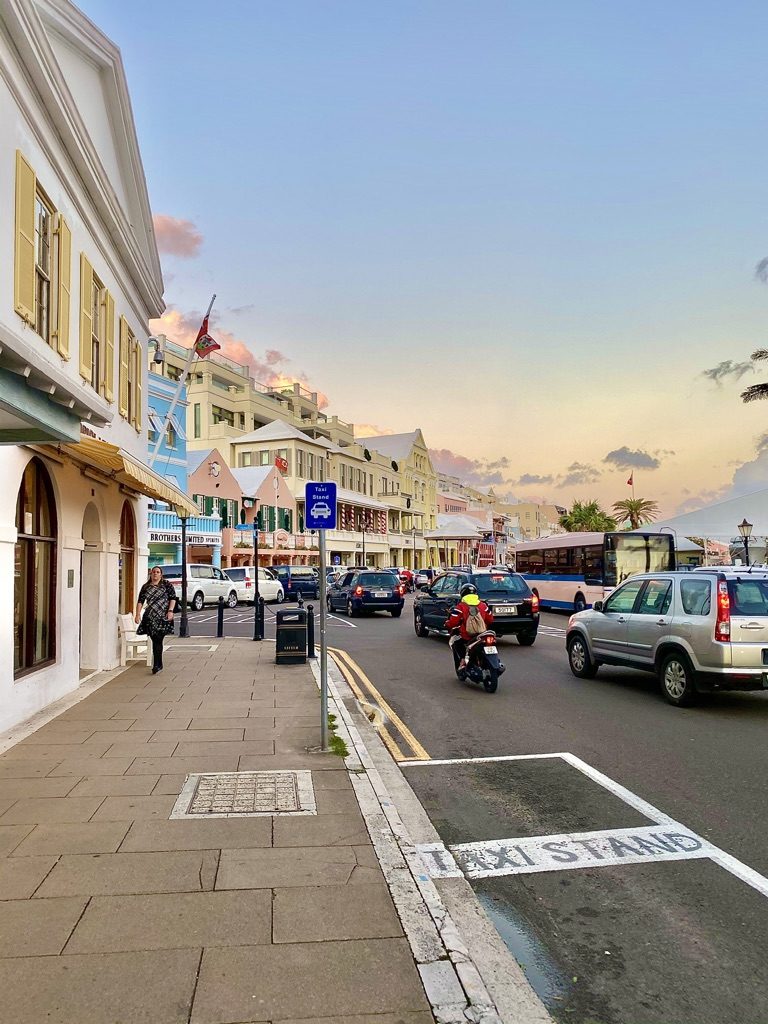
I also learned that the number one industry in Bermuda is insurance and reinsurance. Billions of dollars of insurance money are here. It is referred to as the “world’s risk capital.” I suppose the spirit of Sea Venture is still alive and well here. With a total population of just over 65,000 people, Bermuda has one of the highest per capita incomes in the world. Tourism remains a large industry as well. Over a half million people visit Bermuda each year. For such a small, wealthy island, these figures are staggering. However, because of its size and location, about 90% of the food here is imported. There is some agriculture on the island including a dairy farm and some small gardens.
I have always thought of Bermuda as a British Overseas Territory, which it is. But I found it interesting that when I asked some local Bermudans: “Is Bermuda its own country?” many either answered “yes” or they weren’t sure how to answer. I looked it up. While they have their own governor and parliament, their defense is the responsibility of the United Kingdom. They are not their own country. And, on my first morning here, as I took a walk to attend daily mass at the Catholic Cathedral of St. Teresa, I saw a British naval vessel in port, keeping their overseas territory protected.
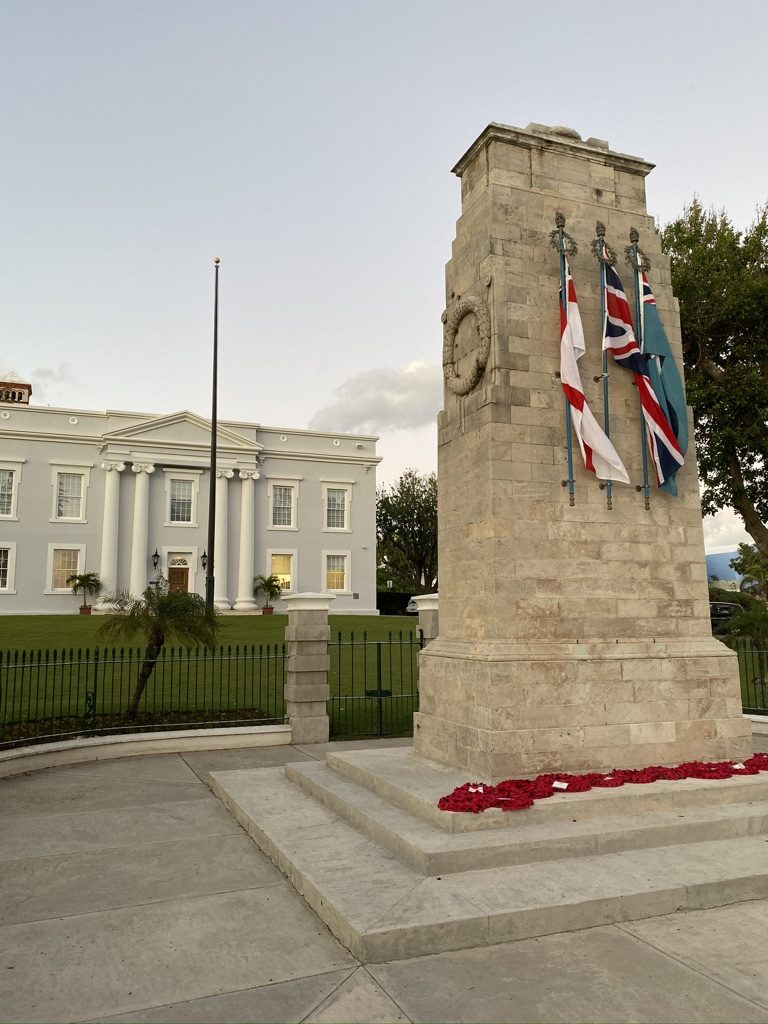
One night a few of us did dinner together at Flanagan’s Irish pub in Hamilton; and another day I did lunch on my own (had the lamb wrap) at the Pickled Onion restaurant and bar. Both were good eats for modest prices in a casual atmosphere. The nearby Bermuda Historical Society museum was closed when I was there, under refurbishment. A local ice cream parlor was also closed, but I found another one. I can’t go without my ice cream, especially when I’m being a tourist. On my final morning in the Hamilton area, I had breakfast at Bouchee, a French bistro. It was great!
Once done with breakfast, I hailed a cab to take me across the island (there are no Ubers here, but there is another local rideshare company called Hitch that I did not use). Hamilton is all the way across the island from the airport and the taxi rides are about $35 USD each way (and yes, they take USD here). However, on the same side of the island as the airport is the more historic area of Bermuda, St. George’s Island.
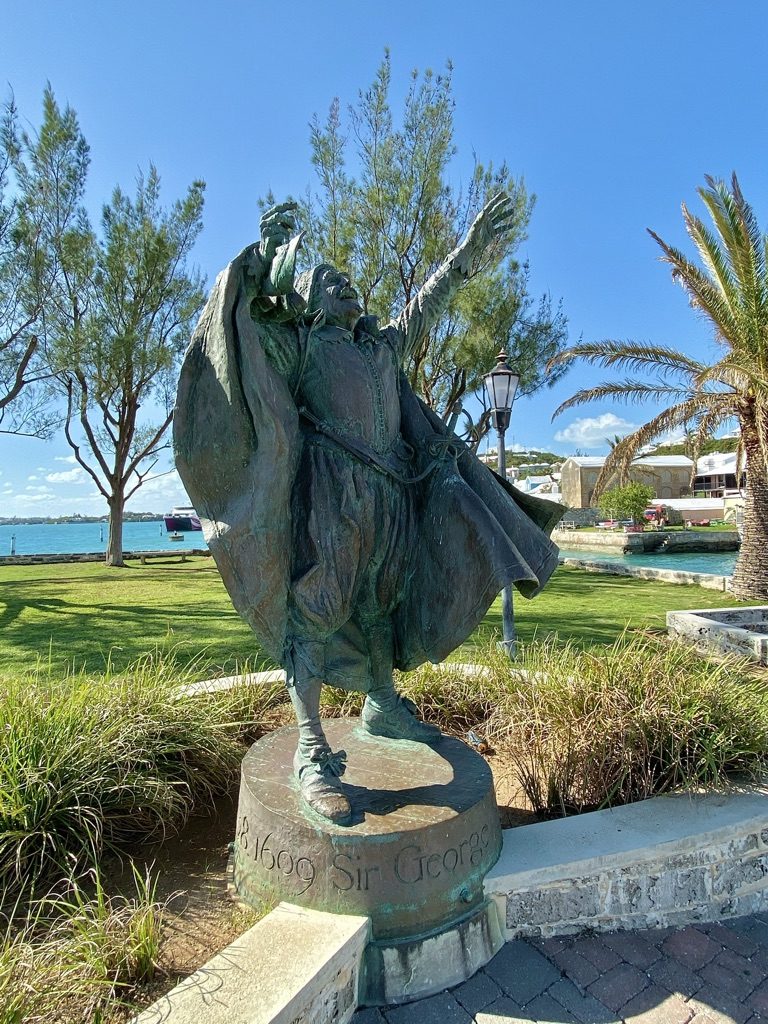
Someone I met during the Entrepreneurship Summit advised me that I could rent bikes from Kristin at the Long Story Short bookstore in St. George’s Island. I messaged with Kristin via her Instagram account and asked if I could also leave my luggage there while I was biking. She said I could. She also opened the shop about 30 minutes early anticipating my arrival to get that bike. On the taxi ride across the island, my driver pointed out Flatt’s Village, where Mark Twain spent some time. I could see it being a relaxing place to chill and write. Thoughts of staying here longer swirled in my head, but I allowed the taxi ride to continue.
Once I arrived at the Long Story Short bookstore to rent my bike, I only had a few hours to do a self-guided historical bike tour of the historic St. George’s Island area. Kristin gave me a map and pointed out some of the highlights along the route. Car traffic is very minimal in Bermuda and even more so on this Saturday morning in this historic district. So, biking around the streets was quite easy. There were a few hills here and there that made it challenging (these are very basic bikes), but it was totally doable and I went at a fairly slow pace, stopping often to take photos and check out some sights. And my bike was totally safe without a lock when I needed to go into a historic site for a short period.
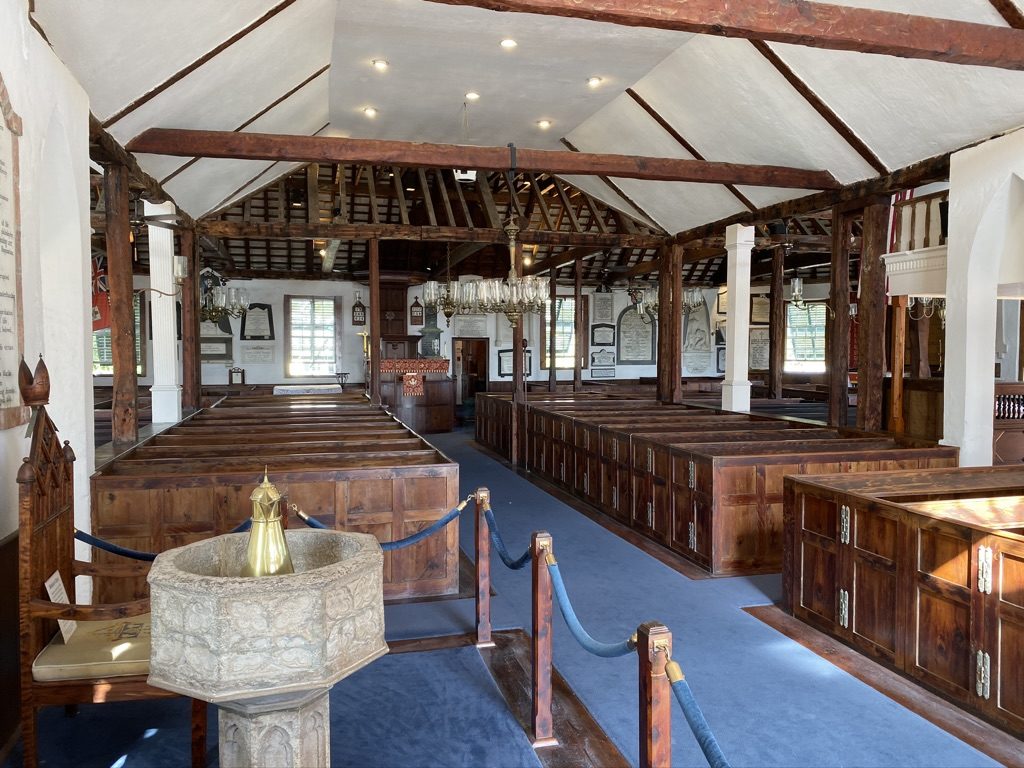
But before the biking could begin, I walked across the small street for some coffee at the Brumae coffee shop. I then took my first bike stroll only two blocks or so down Water Street before I hit a little plaza area with a circular driveway by Bob Burns Park. It is here that I saw a statue of Sir George Somers, considered the Admiral of the Seas and the Father of Bermuda. As mentioned earlier in this article, he is the Admiral that shipwrecked here and helped those stuck here rebuild and sail on to Jamestown, while helping those who decided to stay here to start a colony on Bermuda. Just a few hundred feet away from his statue is a replica of one of the two rebuilt boats, Deliverance, which took the shipwrecked British on to Jamestown. I saw a little reenactment about to start in the town square nearby, but I didn’t really have time to wait around for it to begin.
I biked just a few blocks down the street to Saint Peter’s Anglican Church, the oldest Anglican church outside of the British Isles. Even though I’m Roman Catholic, I was still very inspired when I came across this place. It was founded in 1612, which was only one year after the King James Bible was formed. I reflected on the fact that this church would not have been founded had a group of settlers from England, on their way to Jamestown, not shipwrecked onto this uninhabited island. They held strong to their faith and felt it was important to build a church to worship God, who kept them alive and continued to show them the way across the Atlantic.
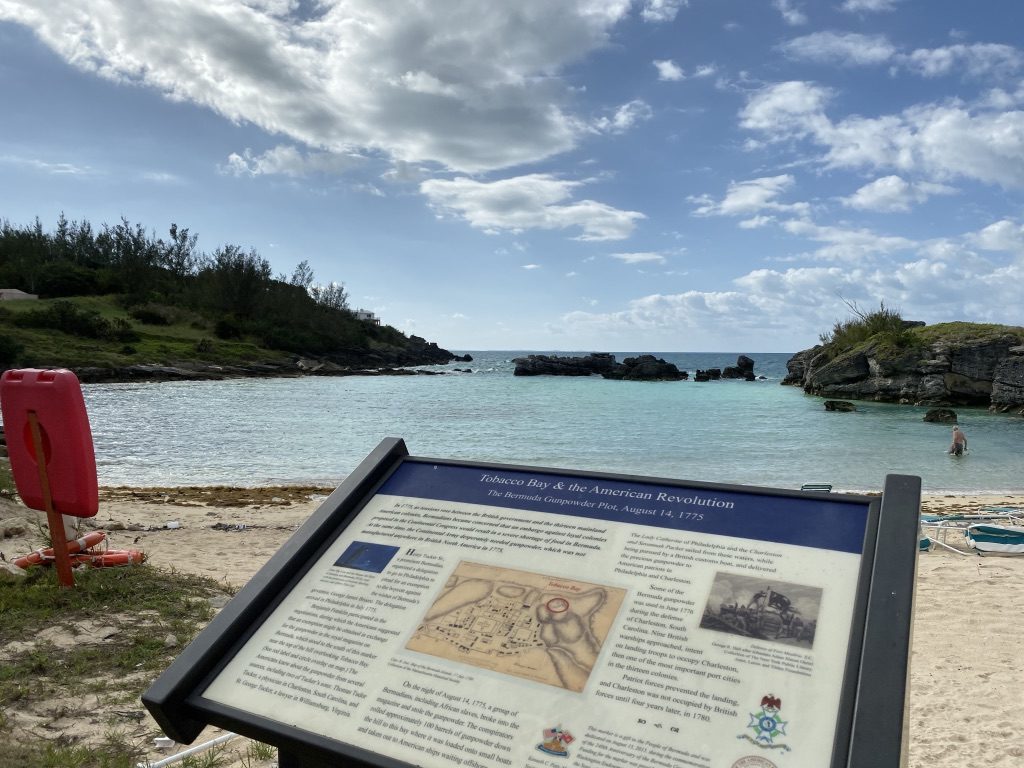
Today, there is a replica of Sea Venture, the ship that crashed into Bermuda, sitting in this church. Perhaps it serves as a reminder that while our journey may not always take us directly where we want to go, life is a journey filled with interesting twists and turns – and if we hold strong to our faith, we will be guided to continue our adventure and the route we are intended for. I’m sure Bermuda would have found settlers sooner or later, but if it were not for the shipwreck of Sea Venture here in 1609, these colonists would not have been its first settlers.
From there, I biked up the hill and to the other side of St. George’s Island to an area called Tobacco Bay. Kristin had recommended that I might stop at the little restaurant bar here for a drink. I wasn’t ready for an adult beverage at this point in the late morning, but I did get a bottle of water and take in the view for about 20 minutes. It was spectacularly beautiful with crystal clear blue green water. And, what’s more, I found a historical marker here that related to the American Revolution!
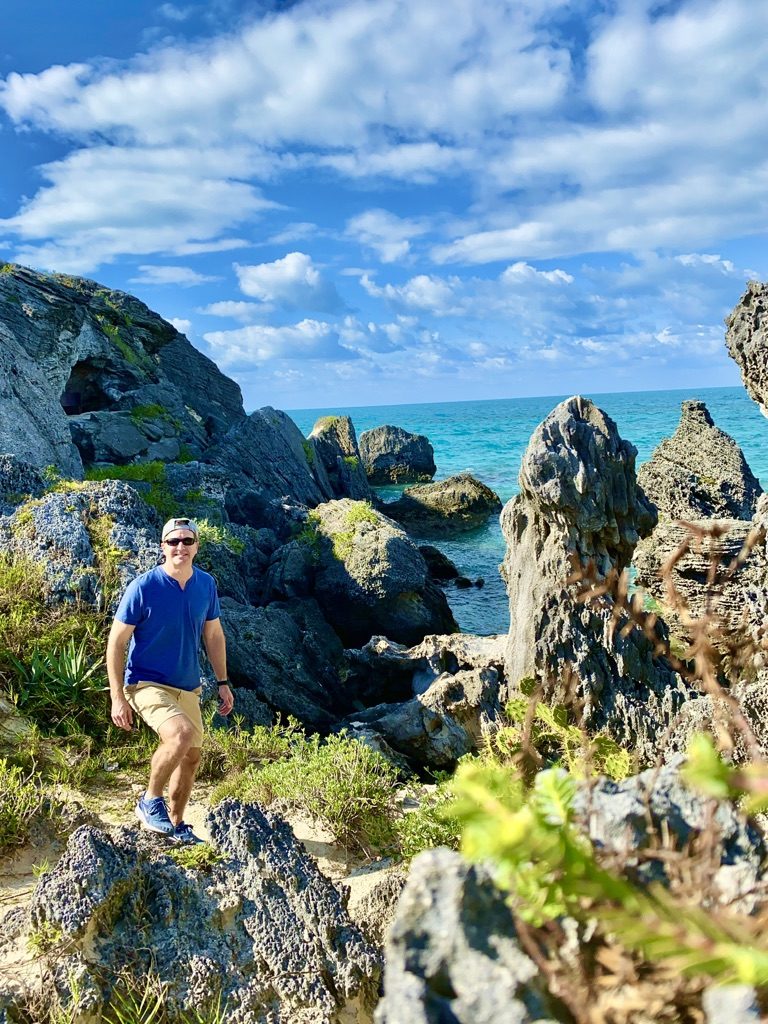
The Continental Congress forbid trade with any loyal British colonies (which would include Bermuda). Local Bermudans became concerned this would quite possibly result in a food shortage for them. At the same time, the Continental Army needed gunpowder. So, a plan was orchestrated to keep that trade alive. It was from this spot in Tobacco Bay, that local Bermudans, led by Henry Tucker Sr., stole the gunpowder, rolled it down the hill and loaded it into small boats to be taken out to American ships waiting offshore.
Some of the Bermuda gunpowder was used in June 1776 during the defense of Charleston, South Carolina. There were nine British warships that were planning to land in the port of Charleston to take control of it, but they were prevented from doing so. A month later, the Declaration of Independence was written, and the next seven years would find the American colonists continuing to fight a war for Independence from the British. However, if it were not for the brave Bermudans who were writing themselves an insurance policy to preserve their own livelihood, the fate of the American Revolution would be unknown.
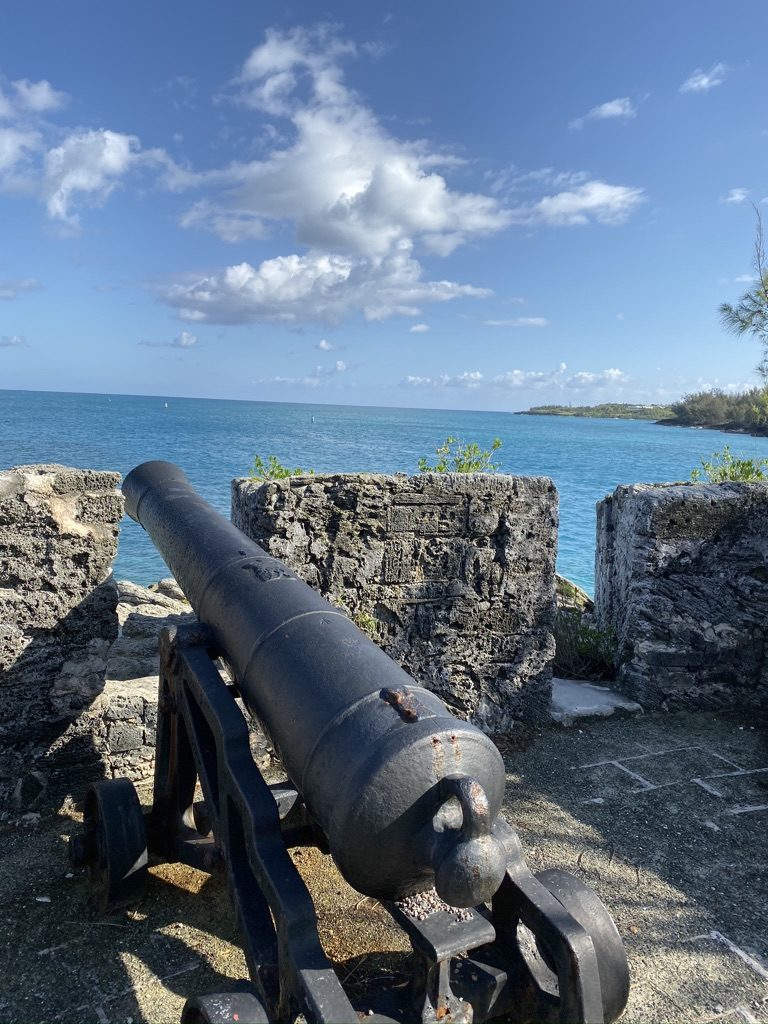
My bike tour continued and took me by many little forts along the coast, including Fort St. Catherine, as well as another abandoned fort that was unnamed and situated at Alexandria Battery Park, and then finally, Gates Fort. These were all decorated with canons that faced out to the sea. I also saw a memorial to Sea Venture along this bike route, along with a goat farm nearby. This was a very scenic place to ride a bike, filled with much history along the way. I was blessed with glorious weather as well.
A friend who recently came back from Bermuda (a few months after my visit there) told me how cool it was, and he added, “incredible and just mind-blowing that it exists.” Indeed. That’s why I love getting around and exploring the history of a place I have never been. None of this history was ever known or relevant to me until I visited. But once I was here, I felt like I had to get to know it. I had to learn who the people here were, why they were here, what brought their ancestors here, why they stayed, how they worshipped, and what things have been important to them across their history through today.
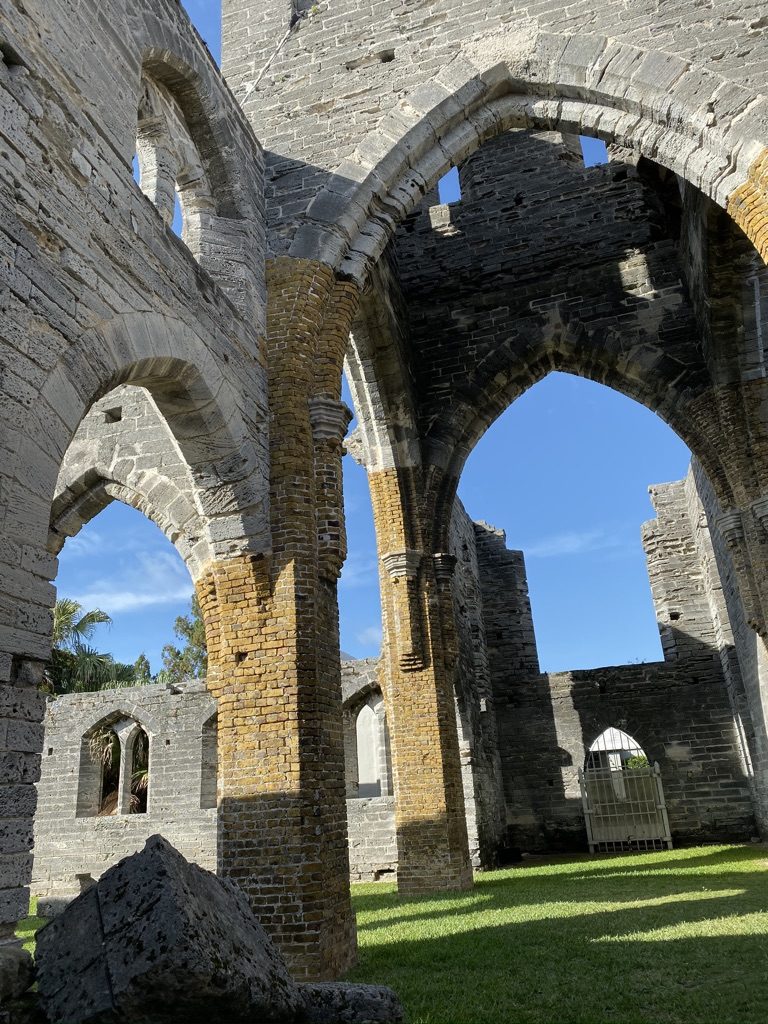
My final stop along this historical bike tour was to the remnants of a placed called the Unfinished Church. When you’re visiting a historic district like this, you are used to seeing what you might call “ruins” of old buildings, including places of worship. But this place was actually an unfinished Gothic church. It was begun in 1874 to replace St. Peter’s Church. But due to various complications (a split in the church congregation and money needed to replace a church in Hamilton that was burned down in a fire), the congregation was led to abandon the building of this church and simply renovate old Saint Peter’s Church.
It was a neat place to see, especially on a very quiet day. I was the only one here. I said a silent prayer that God may help us all continue to finish His Church. And I thanked God for allowing me the opportunity to come to this place in the middle of the Atlantic Ocean and discover its history. May we all also strive to have the faith that those from Sea Venture had to build our lives on a foundation, wherever our journey takes us.
